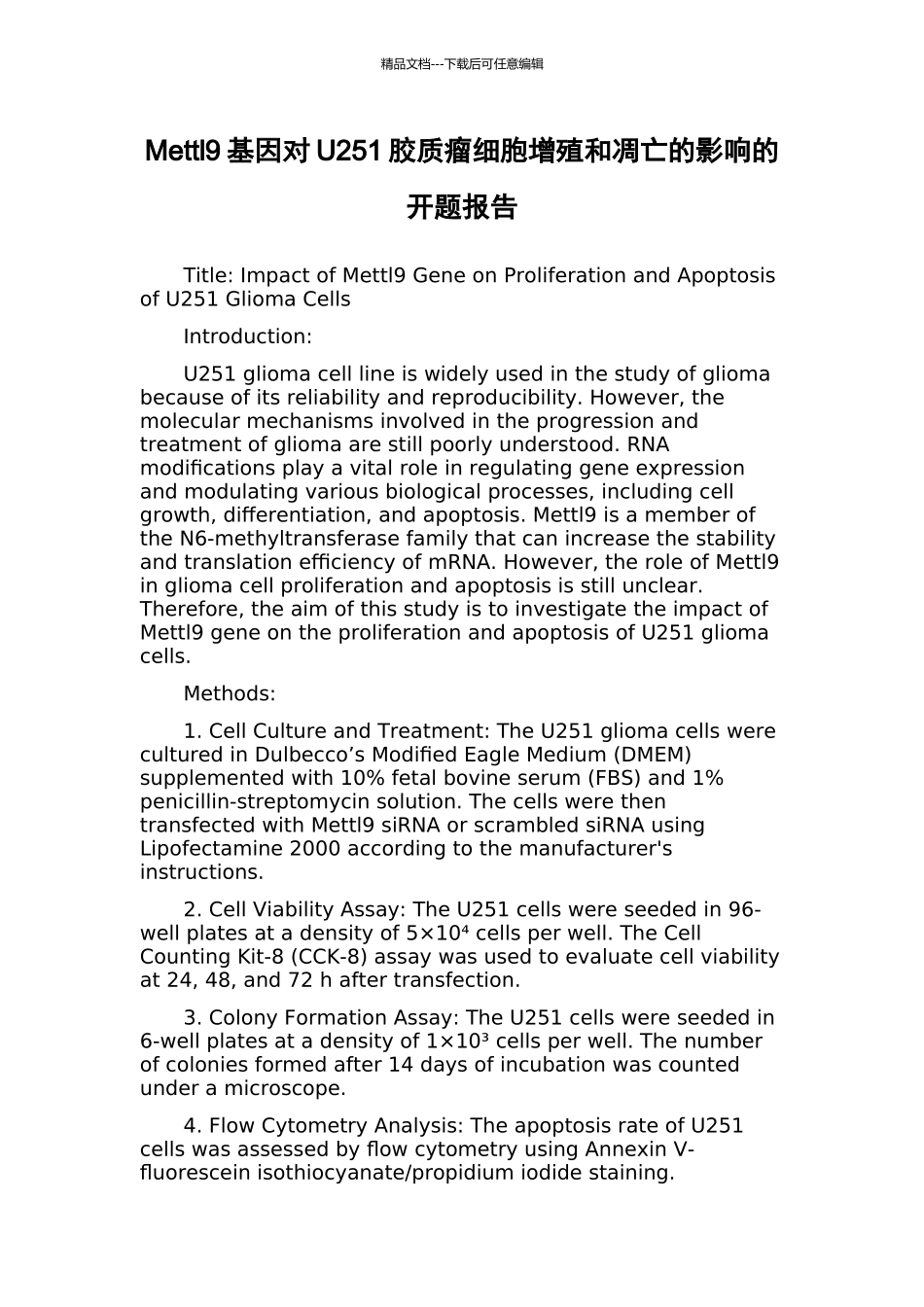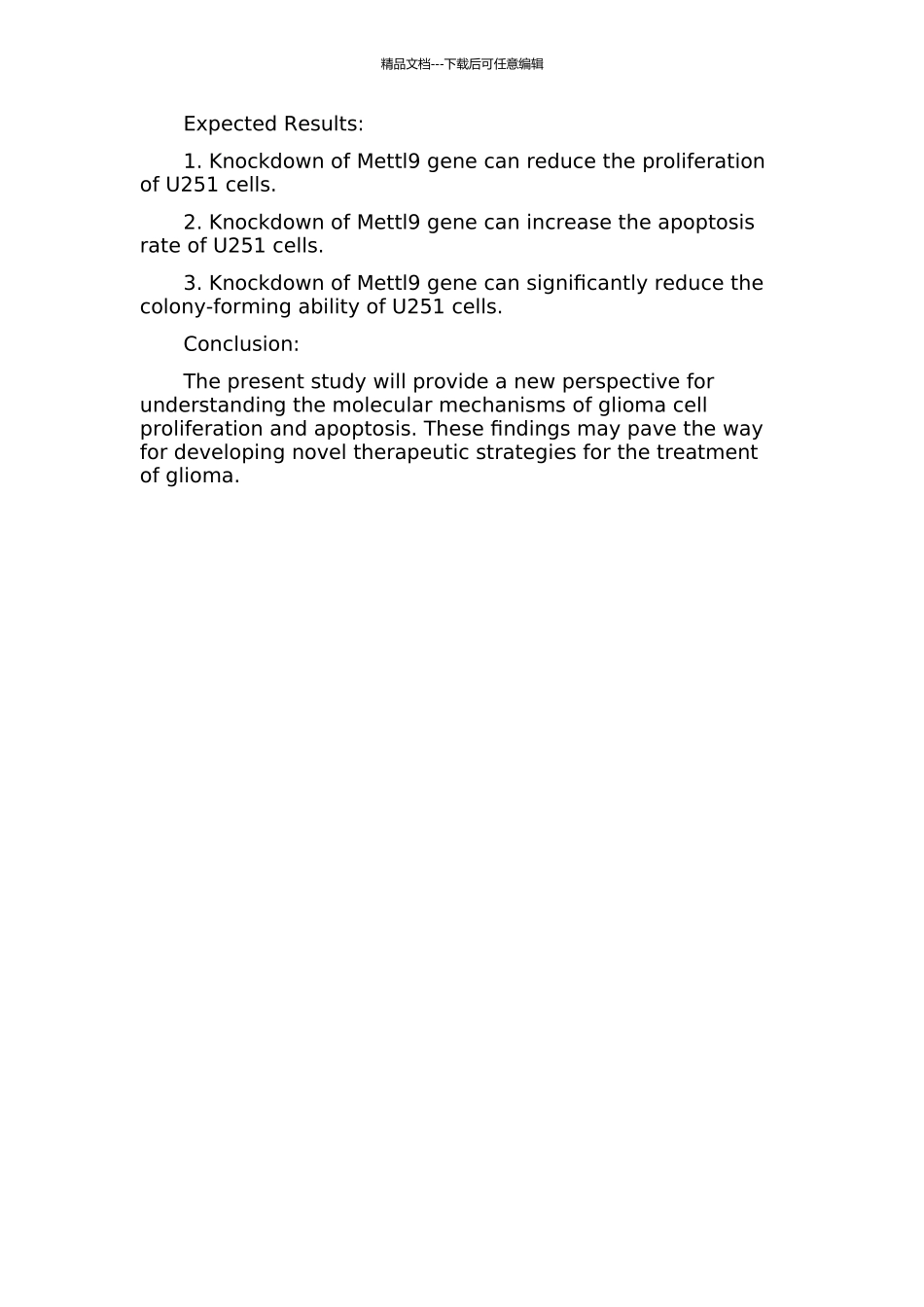精品文档---下载后可任意编辑Mettl9 基因对 U251 胶质瘤细胞增殖和凋亡的影响的开题报告Title: Impact of Mettl9 Gene on Proliferation and Apoptosis of U251 Glioma CellsIntroduction:U251 glioma cell line is widely used in the study of glioma because of its reliability and reproducibility. However, the molecular mechanisms involved in the progression and treatment of glioma are still poorly understood. RNA modifications play a vital role in regulating gene expression and modulating various biological processes, including cell growth, differentiation, and apoptosis. Mettl9 is a member of the N6-methyltransferase family that can increase the stability and translation efficiency of mRNA. However, the role of Mettl9 in glioma cell proliferation and apoptosis is still unclear. Therefore, the aim of this study is to investigate the impact of Mettl9 gene on the proliferation and apoptosis of U251 glioma cells.Methods: 1. Cell Culture and Treatment: The U251 glioma cells were cultured in Dulbecco’s Modified Eagle Medium (DMEM) supplemented with 10% fetal bovine serum (FBS) and 1% penicillin-streptomycin solution. The cells were then transfected with Mettl9 siRNA or scrambled siRNA using Lipofectamine 2000 according to the manufacturer's instructions. 2. Cell Viability Assay: The U251 cells were seeded in 96-well plates at a density of 5×10⁴ cells per well. The Cell Counting Kit-8 (CCK-8) assay was used to evaluate cell viability at 24, 48, and 72 h after transfection. 3. Colony Formation Assay: The U251 cells were seeded in 6-well plates at a density of 1×10³ cells per well. The number of colonies formed after 14 days of incubation was counted under a microscope. 4. Flow Cytometry Analysis: The apoptosis rate of U251 cells was assessed by flow cytometry using Annexin V-fluorescein isothiocyanate/propidium iodide staining.精品文档---下载后可任意编辑Expected Results: 1. Knockdown of Mettl9 gene can reduce the proliferation of U251 cells.2. Knockdown of Mettl9 gene can increase the apoptosis rate of U251 cells.3. Knockdown of Mettl9 gene can significantly reduce the colony-forming ability of U251 cells.Conclusion:The present study will provide a new perspective for understanding the molecular mechanisms of glioma cell proliferation and apoptosis. These findings may pave the way for developing novel therapeutic strategies for the treatment of glioma.

